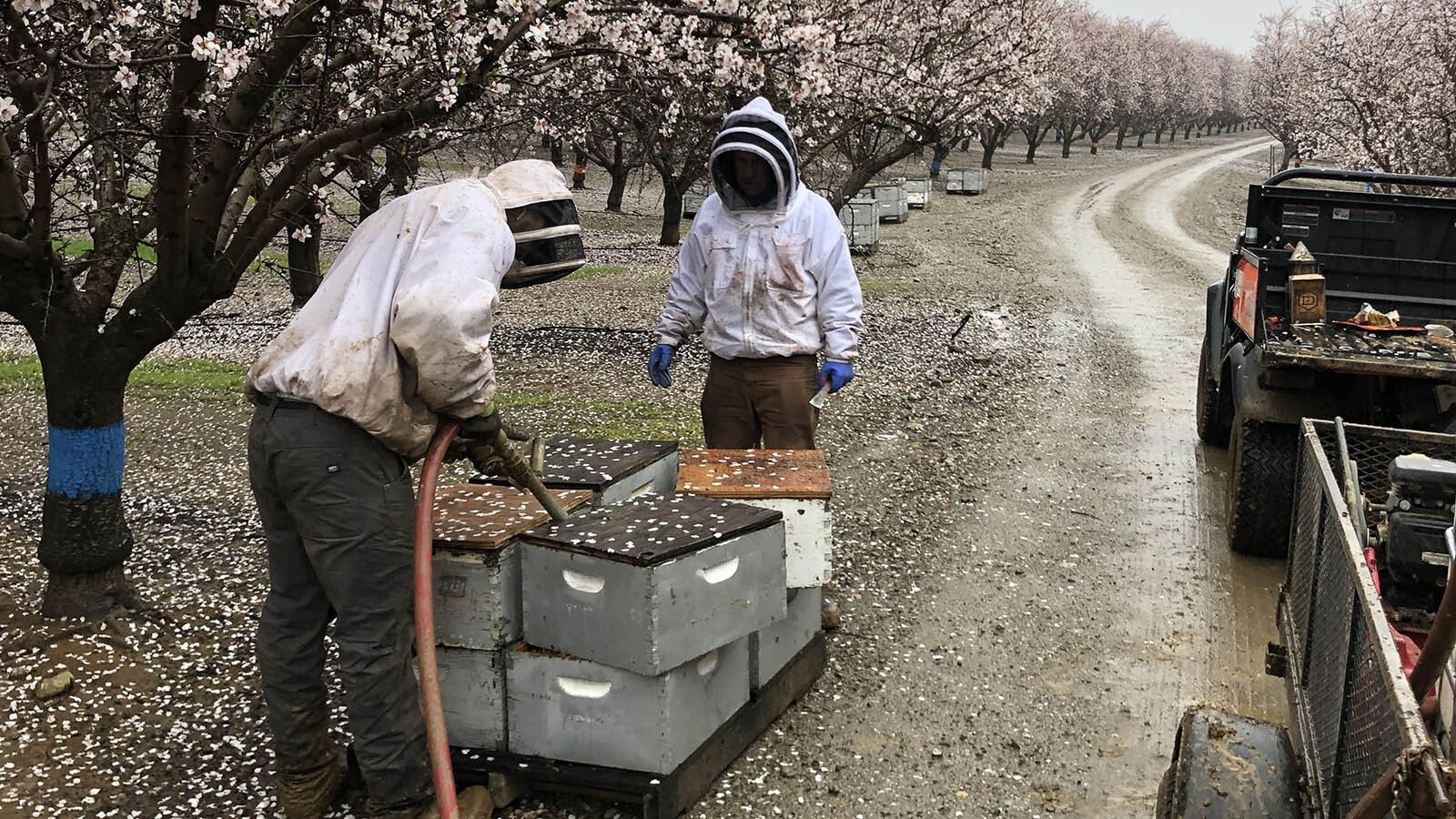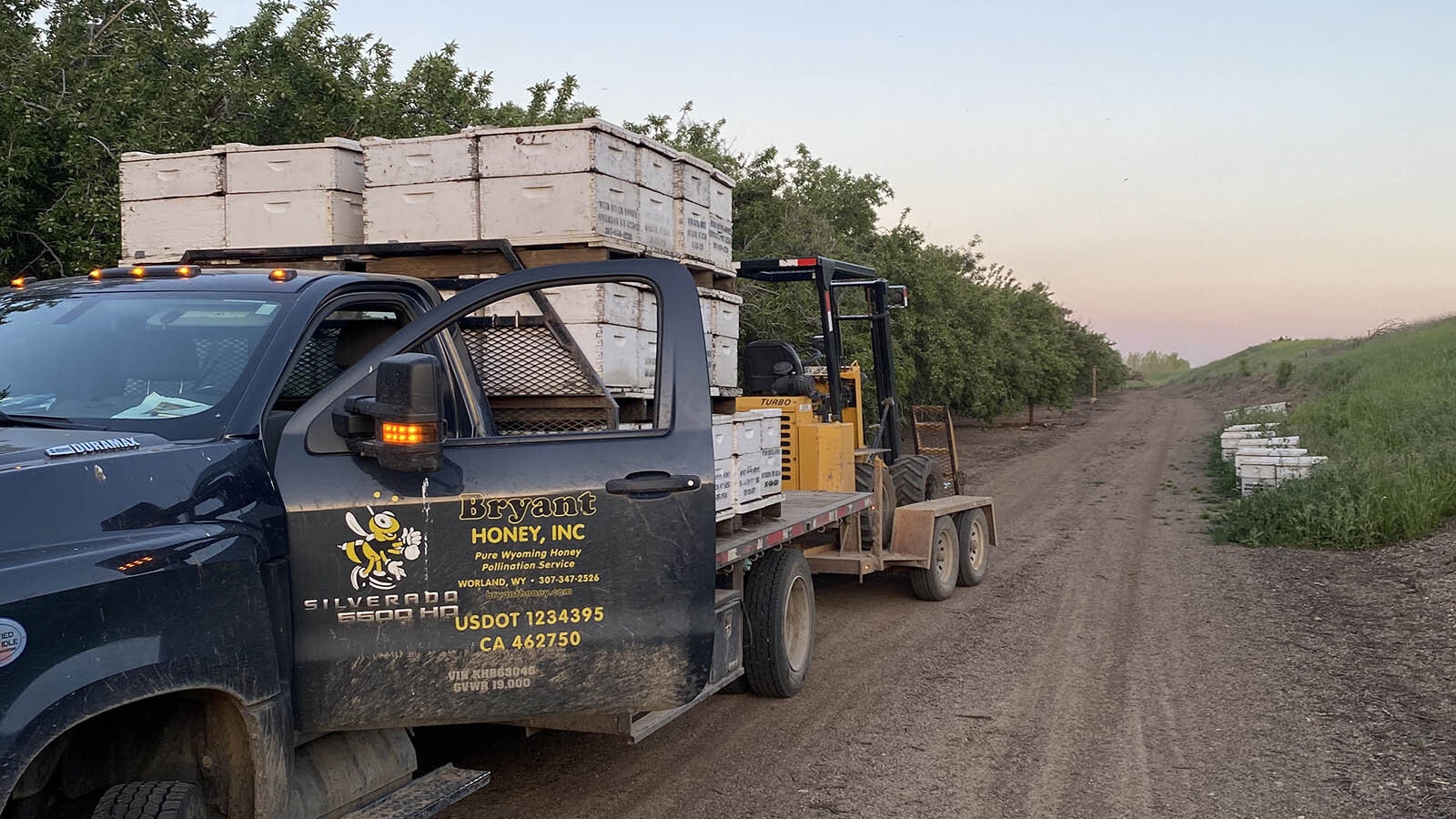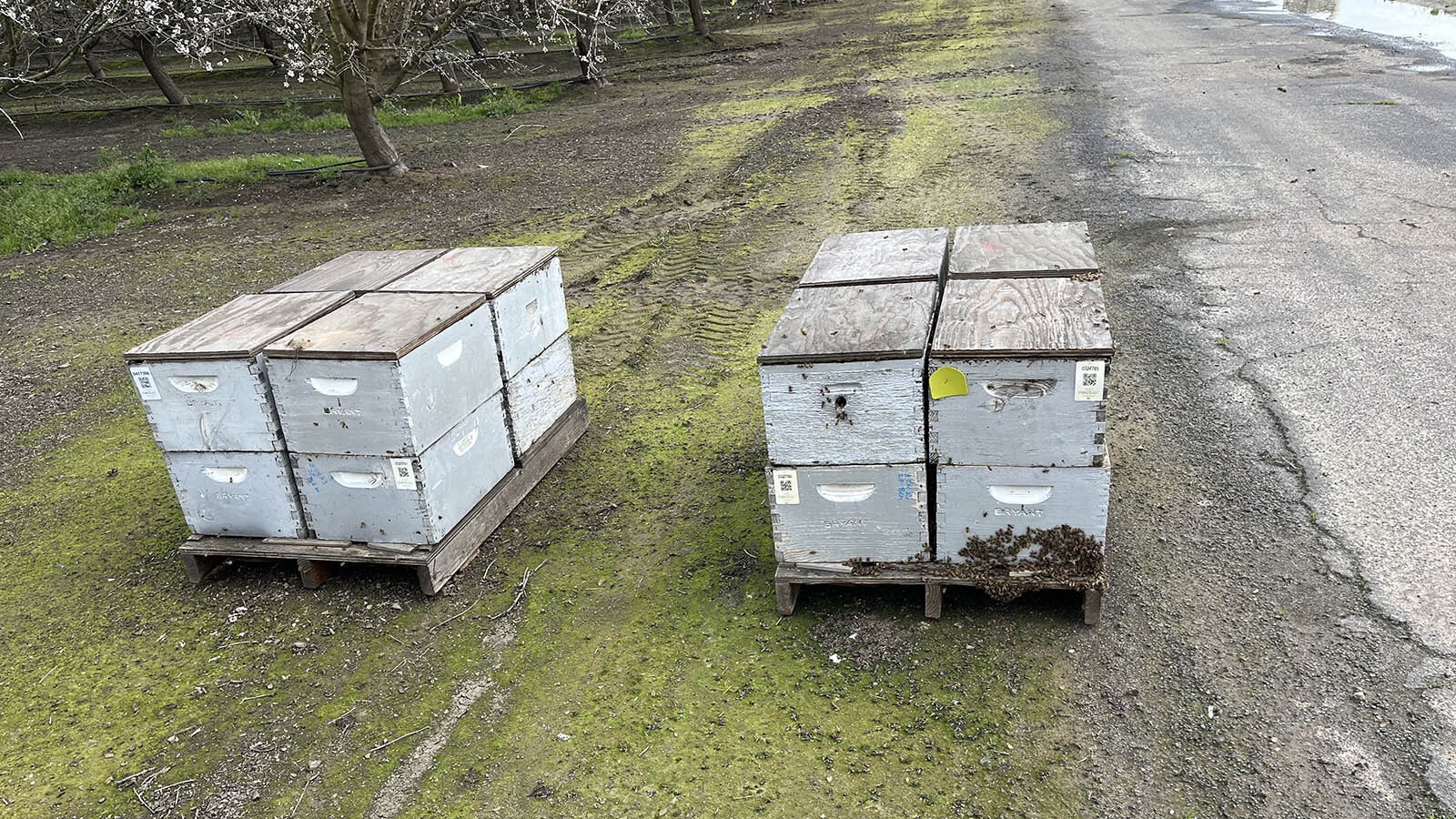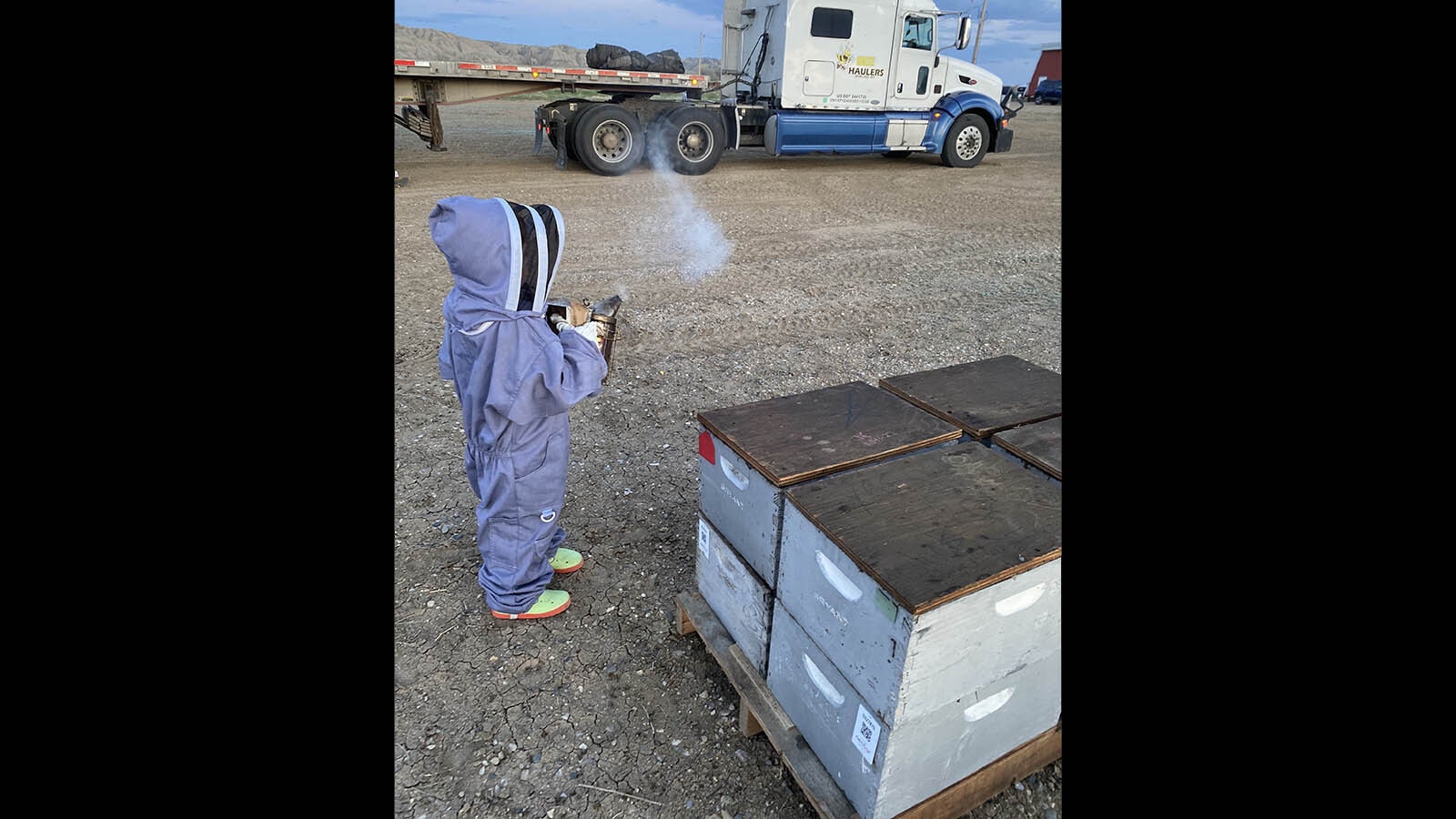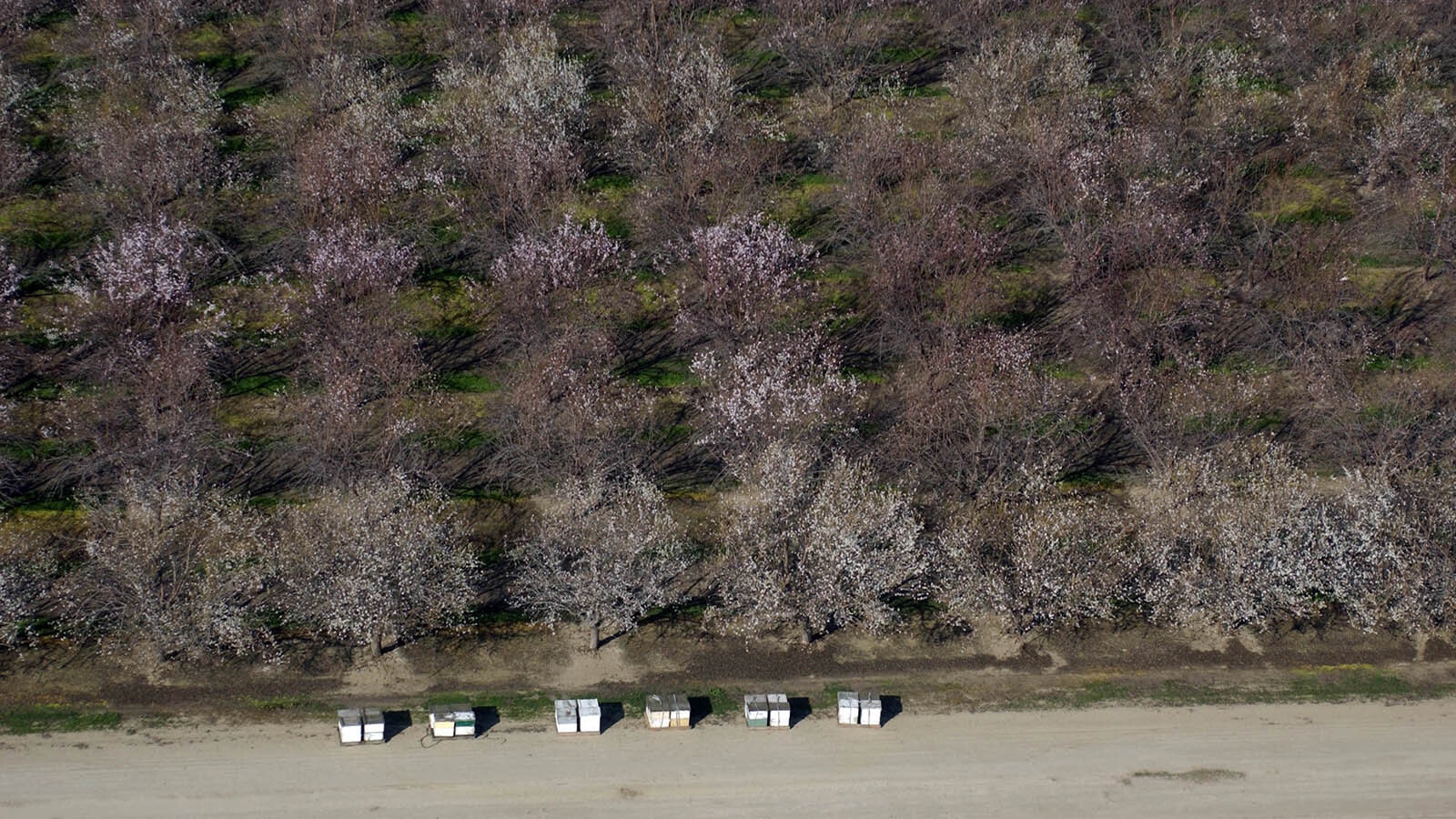If you enjoy almonds, there’s a good chance they were grown in huge groves in California, and perhaps pollinated by Wyoming bees.
But when those Wyoming bees are hard at work hundreds of miles away in California, they’re at risk of being stolen by bee rustlers.
Like the cattle rustlers of the Old West, modern day bee rustlers are organized, determined and crafty, fifth-generation beekeeper Brady Bryant of Worland told Cowboy State Daily.
“There are actually criminal organizations that do this,” he said. “They get forklifts and flatbed trucks and sneak around in the night stealing pallets of beehives.”
So far, his family’s business, Bryant Honey Inc. of Worland, hasn’t been hit by the California bee rustling cartels, but the risk is worrisome.
“It’s happened to a couple of guys I know. They’ve had $50,000, $100,000 worth of bees stolen,” Bryant said.
Bee rustling and honey theft isn’t a huge problem in Wyoming yet, said Jack States, another beekeeper from Worland. But it’s something to be mindful of.
“Thieves could go into an apiary (a place where bees are kept) and take the honey boxes out,” he said. “In that case, they would be taking the honey and just replace it with empty boxes. That way, the beekeeper would have to do some investigation to figure out that there had been some loss of the crop.”
California Calls For Bees
Bryant’s family has been in the bee business in Worland since 1915. For many decades, honey production from the home base was their mainstay.
But then a lucrative second business front opened. Almond growers and other farmers in California were increasingly clamoring for bees to pollinate their crops, and they were willing to pay well for the services.
It’s become a huge business in the U.S. West, Stakes said. Beekeepers in Wyoming, Montana, Utah and other states load up their hives and truck them to California during the late-winter, early-spring pollination season, Stakes said.
Bryant said his father started doing it in 1990. Now, his family takes 30 semitruck loads of buzzing bee boxes,12,000 hives in all, to almond groves near Modesto, California, each year.
They start taking the hives in December. The last ones usually come back home in late March or early April so the bees can get back to their main task of producing Wyoming honey, he said.
Grifters Take Advantage
While the hives are in California, it’s not always possible for a family member or employee to stay near them at all times, Bryant said.
And that’s where the bee rustlers come in. They stalk the fertile California farmlands, looking for unattended hives.
Bryant said his family has been fortunate to deal with honest California farmers who lock their gates and help keep an eye on the hives when his family can’t be there.
But other farmers are inattentive, or even shady, he said. The demand for bees has become so intense that some farmers will hire bee rustlers to go swipe hives off others’ land.
During the peak of the pollination season, there are millions of hives scattered across the almond grooves around Modesto, creating ample opportunity for theft and shady deals, Bryant said.
Beekeepers Sting Back
Beekeepers are starting to push back against grifters and thieves, Byrant said.
From the time of the Old West through today, ranchers have identified their cattle by branding them.
Branding bees isn’t possible, but beekeepers can mark their hive boxes and other equipment with specific coloring or brand symbols, Byrant said.
And they’ve been using social media platforms to watch each other’s backs.
“People use Facebook posts in beekeeper’s forums. ‘These are photos of my equipment, and this is where it’s supposed to be. Let me know if you see anything shady happening,’” he said. “It’s kind of cool to see the beekeepers coming together to fight back.”
Digital tracking tags also can be attached hives, so that if one is reported missing, it’s location can be tracked, Bryant said.
But that technology is new and still expensive. At about $5 per tag, it’s not yet practical for an operation the size of his family’s.
For now, they have to rely mostly on keeping a physical inventory during visits to California. And with 12,000 hives, that can get tricky.
“If I have thousands of hives in a location, you might get away with stealing a pallet and I might not even notice it. But if you took 10 pallets, I might go, ‘Huh, that entire space is empty. What happened?’” he said.
‘Out Of Sight, Out Of Mind’
As bees and honey become increasingly valuable, it’s a good idea to keep a sharp eye out for any funny business, even in Wyoming, Stakes said.
“Many of our hives are on private land, so we establish good relationships with the farmers or ranchers who own the land so they can help keep an eye on our hives,” he said.
In country where hungry bears might be on the prowl for fresh honey, some beekeepers surround their hives with electric fences, which can also help keep human thieves at bay, he said.
It’s also smart to not place hives in highly visible areas, such as near a busy road, Stakes said.
“We try to go way down off the end of a side road, or maybe over the other side of a little hill,” he said. “Out of sight, out of mind.”
Mark Heinz can be reached at mark@cowboystatedaily.com.

